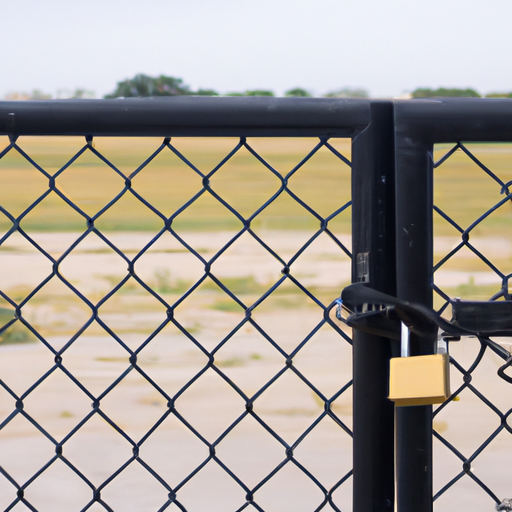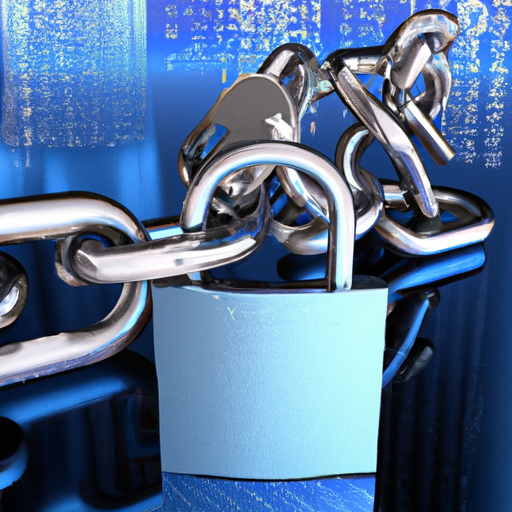How Does A DMZ (Demilitarized Zone) Protect Internal Networks?
In the ever-evolving world of cybersecurity, protecting internal networks is of paramount importance. One effective solution that has emerged is the implementation of a DMZ, or Demilitarized Zone. But how does this so-called safeguard work its magic? By creating a buffer zone between the untrusted external world and the trusted internal network, a DMZ acts as a shield, preventing potential threats from infiltrating and wreaking havoc on your precious data. Let’s delve further into the intricacies of how a DMZ operates and the crucial role it plays in fortifying your network security.
What is a DMZ?
A DMZ, short for Demilitarized Zone, is a security architecture that is implemented between an internal network and an external network, such as the internet. It acts as a buffer zone between the two networks and is designed to provide an additional layer of protection for sensitive resources and data within the internal network.
Definition of a DMZ
A DMZ is a network segment that is isolated from both the internal and external networks. It serves as a neutral zone that allows controlled and limited access to specific resources, while minimizing the risk of unauthorized access to the internal network.
Purpose of a DMZ
The primary purpose of a DMZ is to enhance the security of internal networks by isolating sensitive resources from direct exposure to external threats. By creating a separate network segment, organizations can carefully control and monitor the access to resources within the DMZ, providing an added layer of protection against potential attacks.
Isolation of sensitive networks
One of the key purposes of a DMZ is to isolate sensitive networks from the untrusted external network. By placing critical resources, such as public-facing servers and critical applications, within the DMZ, organizations can limit direct access to their internal network, reducing the risk of data breaches and unauthorized access.
Protection against external threats
Another important purpose of a DMZ is to provide a barrier between the external network and the internal network, safeguarding the internal assets from potential threats originating from the internet. By implementing security measures within the DMZ, such as firewalls and intrusion detection systems, organizations can detect and mitigate external threats before they reach the internal network.
Components of a DMZ
A DMZ typically consists of several components that work together to provide the desired level of security. These components can vary based on the specific needs and requirements of an organization, but some common components include:
Public-facing servers
Public-facing servers, also known as perimeter servers, are components that are accessed directly by external users or systems. These servers are placed within the DMZ to provide controlled access to services such as web applications, email servers, and file transfer protocols. By isolating these servers within the DMZ, organizations can protect their internal network from direct exposure to external threats.
Firewalls
Firewalls are an essential component of a DMZ, as they act as the first line of defense against unauthorized access from the external network. Firewalls analyze incoming and outgoing network traffic, enforcing security policies and allowing only authorized connections between the external network, DMZ, and internal network. They play a crucial role in preventing malicious activities and unauthorized access to critical resources.
Intrusion Detection Systems (IDS)
Intrusion detection systems monitor network traffic within the DMZ, searching for any signs of suspicious or malicious behavior. When an IDS detects potential threats, it generates alerts or takes preventive actions to mitigate the risk. IDSs are valuable tools in identifying and responding to security incidents within the DMZ, providing an added layer of security to the network infrastructure.
Load Balancers
Load balancers distribute incoming network traffic across multiple servers within the DMZ, ensuring optimal performance and availability of resources. They help prevent overloading of servers, improve response times, and provide redundancy in case of failures. Load balancers also contribute to the overall security of the DMZ by preventing denial-of-service attacks and ensuring uninterrupted access to critical resources.
DMZ Design and Architecture
The design and architecture of a DMZ can vary based on the specific requirements and security goals of an organization. There are several common architectures used in DMZ implementations:
Single-homed DMZ
A single-homed DMZ refers to a configuration where the DMZ is connected to a single firewall interface. This configuration is suitable for small-scale deployments or for organizations that have limited resources and do not require complex network separation. In a single-homed DMZ, the firewall acts as a barrier between the external network and the DMZ, filtering and controlling the traffic flow.
Dual-homed DMZ
A dual-homed DMZ configuration involves connecting the DMZ to two separate firewall interfaces. One interface is connected to the external network, while the other is connected to the internal network. This configuration provides an additional layer of security by isolating the DMZ from the internal network. It allows for more granular control over the traffic flow between the external network, DMZ, and internal network.
Screened Subnet DMZ
A screened subnet DMZ, also known as a three-legged DMZ, consists of two firewalls. One firewall is positioned between the external network and the DMZ, while the other firewall is positioned between the DMZ and the internal network. This architecture provides the highest level of security and allows for strict segmentation of the network zones. The two firewalls work together to filter and control the traffic flow, providing a robust defense against external threats.
Separation of Networks
In a DMZ architecture, networks are categorized into three main zones:
External network
The external network refers to the untrusted network segment, typically the internet, where potential threats and attacks originate. This network is isolated from the internal network by the DMZ and is subject to stringent security measures, including traffic filtering and access control policies.
DMZ network
The DMZ network acts as an intermediate zone between the external network and the internal network. It contains resources that are exposed to the external network, such as public-facing servers, while also providing a level of protection for the internal network. The DMZ network has its own security measures and access control policies to ensure the safety of sensitive resources.
Internal network
The internal network is the trusted network segment containing critical resources, such as databases, file servers, and employee workstations. It is isolated from the external network by the DMZ, ensuring that unauthorized access is prevented. The internal network is heavily protected with advanced security measures and access controls to safeguard sensitive information and prevent data breaches.
Traffic Filtering and Segmentation
To maintain a secure and controlled environment within the DMZ, traffic filtering and segmentation techniques are employed. These techniques help in preventing unauthorized access and mitigating potential threats.
Traffic filtering techniques
Traffic filtering involves the examination and control of network traffic to allow or deny specific types of communication. Firewalls play a vital role in traffic filtering, as they enforce security policies based on predefined rules and configurations. These rules determine which types of traffic are allowed to pass through the firewall, providing a strong defense against unauthorized access and malicious activities.
Segmenting network zones
Segmenting network zones involves the separation of different parts of the network into individually protected segments. This segmentation allows organizations to implement different security measures and access controls for each segment, based on its level of sensitivity and vulnerability. By segmenting the network into zones, the impact of a security breach can be limited, preventing an attacker from gaining unauthorized access to critical resources.
Network Security Policies
Network security policies are a crucial aspect of DMZ design and operation. These policies define the rules and regulations that govern the access and usage of resources within the DMZ. Key security policies include:
Access control policies
Access control policies determine who can access specific resources within the DMZ and the level of access granted. These policies define user roles and permissions, authentication requirements, and access restrictions, ensuring that only authorized individuals can access sensitive resources. Access control policies play a critical role in safeguarding the DMZ against unauthorized access and potential security breaches.
Service access policies
Service access policies govern the protocols, ports, and services that are allowed to pass through the DMZ. They determine which services can be exposed to the external network and ensure that only necessary services are accessible. By defining service access policies, organizations can minimize the attack surface and reduce the risk of unauthorized access to critical resources within the DMZ.
Redundancy and High Availability
Redundancy and high availability are important considerations when designing a DMZ architecture. These measures ensure that critical resources within the DMZ remain accessible and operational even in the event of hardware or software failures.
Load balancing
Load balancing distributes incoming network traffic across multiple servers within the DMZ, ensuring optimal performance and availability of resources. By distributing the workload across multiple servers, load balancing improves response times, prevents overloading of servers, and provides redundancy in case of failures. Load balancing is a crucial component of a resilient and high-performing DMZ architecture.
Failover mechanisms
Failover mechanisms are implemented to ensure continuous service availability in the event of a failure. Redundant resources, such as servers or firewalls, are configured to take over the workload in case the primary resource fails. Failover mechanisms help minimize downtime and ensure that critical resources within the DMZ remain available, even in the face of hardware or software failures.
Preventing Lateral Movement
Another important aspect of DMZ architecture is preventing lateral movement, which refers to the spread of threats within the network. Several measures can be taken within the DMZ to contain threats and block malicious lateral movement.
Containment of threats within the DMZ
By isolating critical resources within the DMZ, organizations can contain and limit the impact of threats. In the event of a successful attack or breach, the isolation provided by the DMZ reduces the attacker’s ability to move laterally and gain access to the internal network. This containment minimizes the potential damage and allows for prompt response and mitigation.
Blocking malicious lateral movement
DMZ architectures can be designed to minimize the possibility of lateral movement by implementing strict access controls and traffic filtering measures. By carefully controlling the flow of traffic between the DMZ and the internal network, organizations can prevent unauthorized access and block any attempted lateral movement by potential attackers. These measures greatly enhance the security posture of the overall network infrastructure.
Secure Remote Access
Secure remote access is an essential requirement for many organizations, enabling employees and authorized individuals to connect to internal resources from outside the network perimeter. DMZ architectures can facilitate secure remote access without compromising the security of the internal network.
External access to internal resources
By implementing a secure remote access solution within the DMZ, organizations can provide controlled access to internal resources for authorized individuals outside the network perimeter. This ensures that remote employees, partners, or customers can securely access necessary resources without directly exposing the internal network to external threats.
Implementing VPNs
Virtual Private Networks (VPNs) are commonly used to establish secure encrypted connections between remote users and internal resources. By implementing VPNs within the DMZ, organizations can establish secure tunnels for remote access, ensuring that sensitive data and communications are protected from interception and unauthorized access. VPNs provide a secure and encrypted pathway for remote users to access internal resources, maintaining the integrity of the DMZ and the internal network.
In conclusion, a DMZ is a critical component of network security architecture that plays a vital role in protecting internal networks. By isolating sensitive resources, implementing security measures, and following best practices in design and operation, organizations can create a strong and secure barrier between their internal network and the external threats of the internet. The comprehensive implementation of a DMZ architecture greatly enhances the overall security posture of an organization, safeguarding critical resources, and protecting against potential threats.








